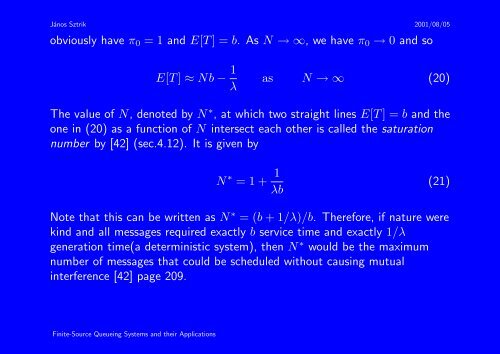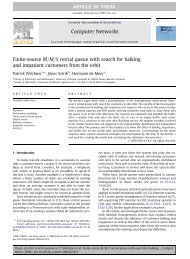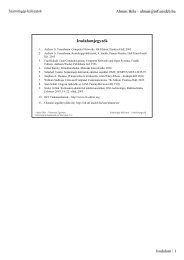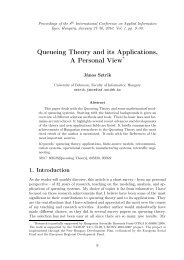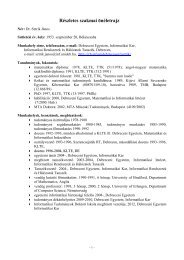Finite-Source Queueing Systems and their Applications
Finite-Source Queueing Systems and their Applications
Finite-Source Queueing Systems and their Applications
You also want an ePaper? Increase the reach of your titles
YUMPU automatically turns print PDFs into web optimized ePapers that Google loves.
János Sztrik 2001/08/05<br />
obviously have π0 = 1 <strong>and</strong> E[T ] = b. As N → ∞, we have π0 → 0 <strong>and</strong> so<br />
E[T ] ≈ Nb − 1<br />
λ<br />
as N → ∞ (20)<br />
The value of N, denoted by N ∗ , at which two straight lines E[T ] = b <strong>and</strong> the<br />
one in (20) as a function of N intersect each other is called the saturation<br />
number by [42] (sec.4.12). It is given by<br />
N ∗ = 1 + 1<br />
λb<br />
(21)<br />
Note that this can be written as N ∗ = (b + 1/λ)/b. Therefore, if nature were<br />
kind <strong>and</strong> all messages required exactly b service time <strong>and</strong> exactly 1/λ<br />
generation time(a deterministic system), then N ∗ would be the maximum<br />
number of messages that could be scheduled without causing mutual<br />
interference [42] page 209.<br />
<strong>Finite</strong>-<strong>Source</strong> <strong>Queueing</strong> <strong>Systems</strong> <strong>and</strong> <strong>their</strong> <strong>Applications</strong>


